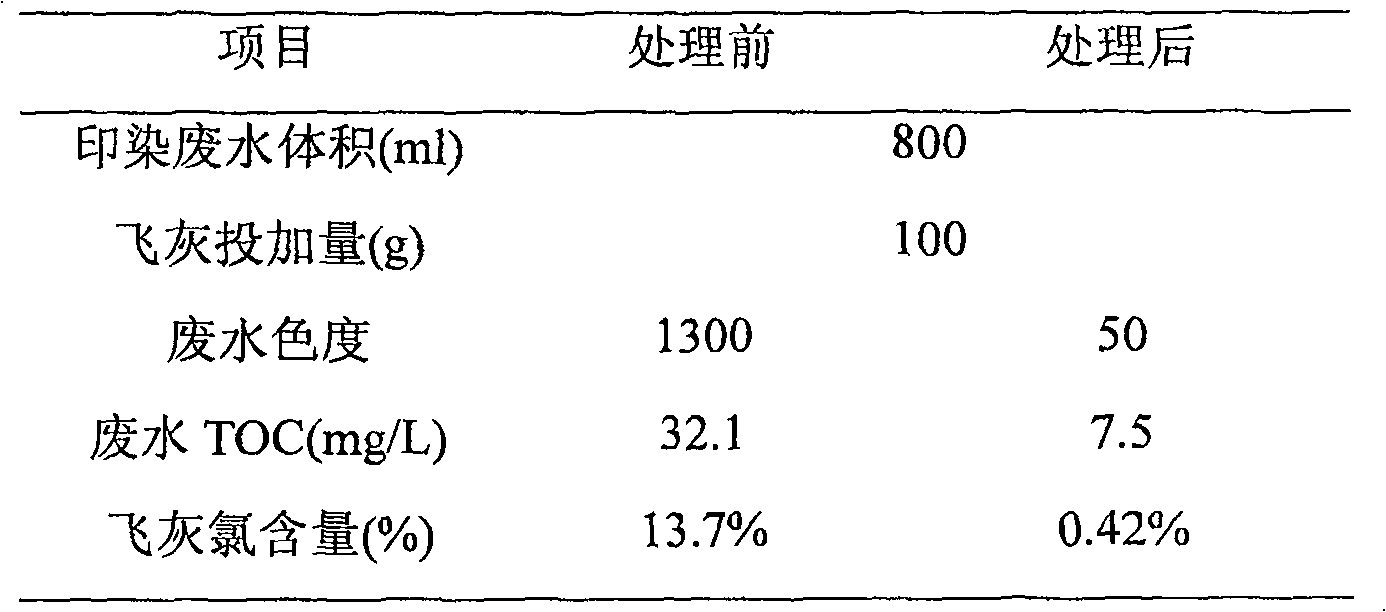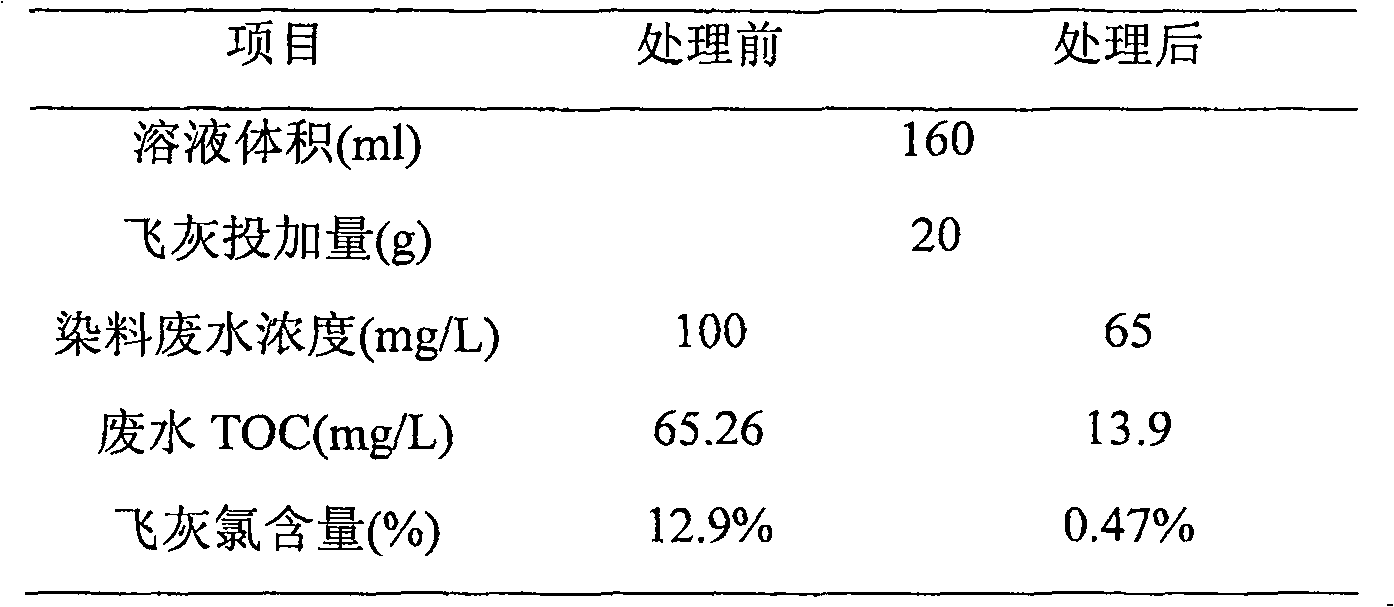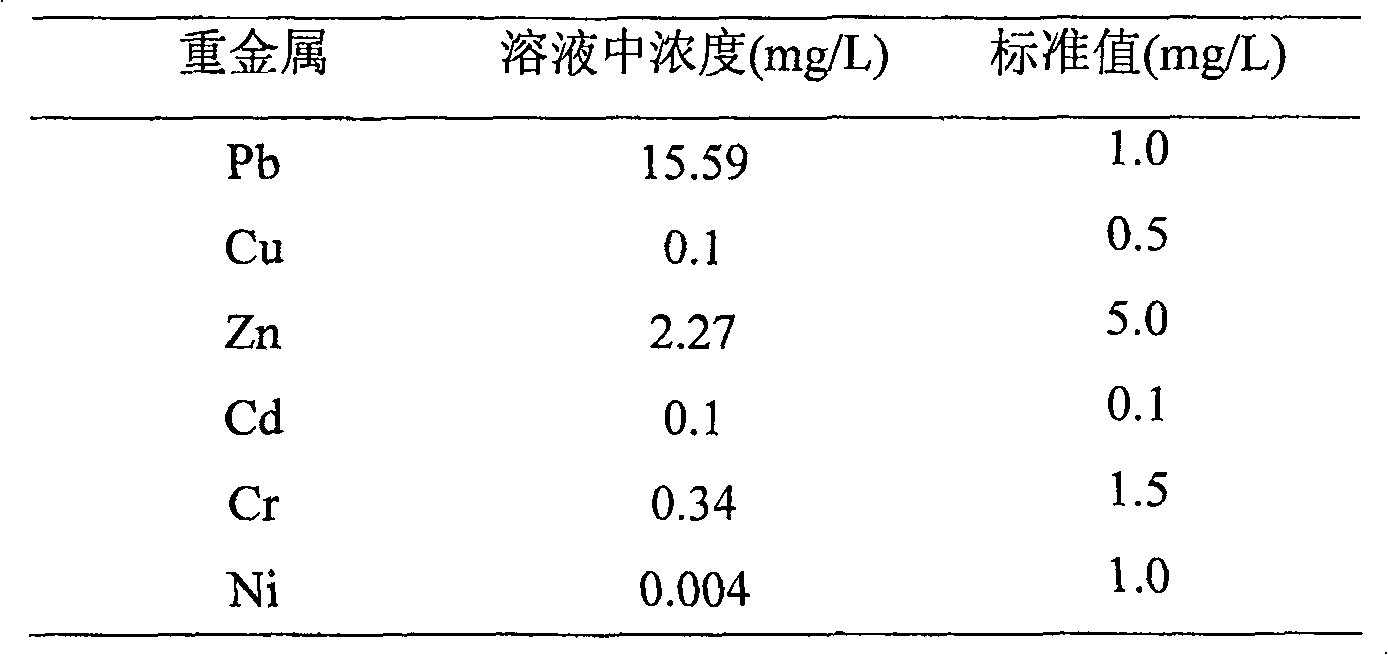Method for treating printing and dyeing waste water by domestic garbage burning fly ash
A technology for domestic waste incineration and printing and dyeing wastewater, applied in the field of environmental engineering
- Summary
- Abstract
- Description
- Claims
- Application Information
AI Technical Summary
Problems solved by technology
Method used
Image
Examples
Embodiment 1
[0011] Under normal temperature and pressure conditions, add 800mL of printing and dyeing wastewater from cotton spinning mills into a beaker, take 100g of municipal solid waste incineration fly ash dried at 105°C for 24 hours, start the agitator to fully mix the two, and keep the temperature constant at 25°C. Stir for 20-40 minutes, and then stand still for 10-20 minutes. After separating the fly ash and printing and dyeing wastewater, analyze the chroma and TOC of the supernatant after treatment, and analyze the residual chlorine content in the fly ash. The experimental results are shown in Table 1.
[0012] Table 1 Printing and dyeing wastewater treatment effect
[0013]
Embodiment 2
[0015] Under normal temperature and pressure conditions, add 160mL100mg / L MB printing and dyeing wastewater prepared in the laboratory into a beaker, take 20g of municipal solid waste incineration fly ash dried at 105°C for 24 hours, start the agitator to fully mix the two, and keep the temperature constant at 25 ℃. Stir for 20-40 minutes, then stand still for 10-20 minutes, separate the fly ash and printing and dyeing wastewater, analyze the concentration and TOC of the supernatant after treatment, and measure the concentration of heavy metals in the supernatant. The concentration of heavy metals except Pb is lower than the wastewater discharge standard; analysis The residual chlorine content in the fly ash after treatment, the leaching concentration of heavy metals was measured by the TCLP standard leaching test on the fly ash samples, and the leaching concentrations were all lower than the US EPA standard. The experimental results are shown in Tables 2, 3, and 4.
[0016] ...
PUM
 Login to View More
Login to View More Abstract
Description
Claims
Application Information
 Login to View More
Login to View More - R&D
- Intellectual Property
- Life Sciences
- Materials
- Tech Scout
- Unparalleled Data Quality
- Higher Quality Content
- 60% Fewer Hallucinations
Browse by: Latest US Patents, China's latest patents, Technical Efficacy Thesaurus, Application Domain, Technology Topic, Popular Technical Reports.
© 2025 PatSnap. All rights reserved.Legal|Privacy policy|Modern Slavery Act Transparency Statement|Sitemap|About US| Contact US: help@patsnap.com



